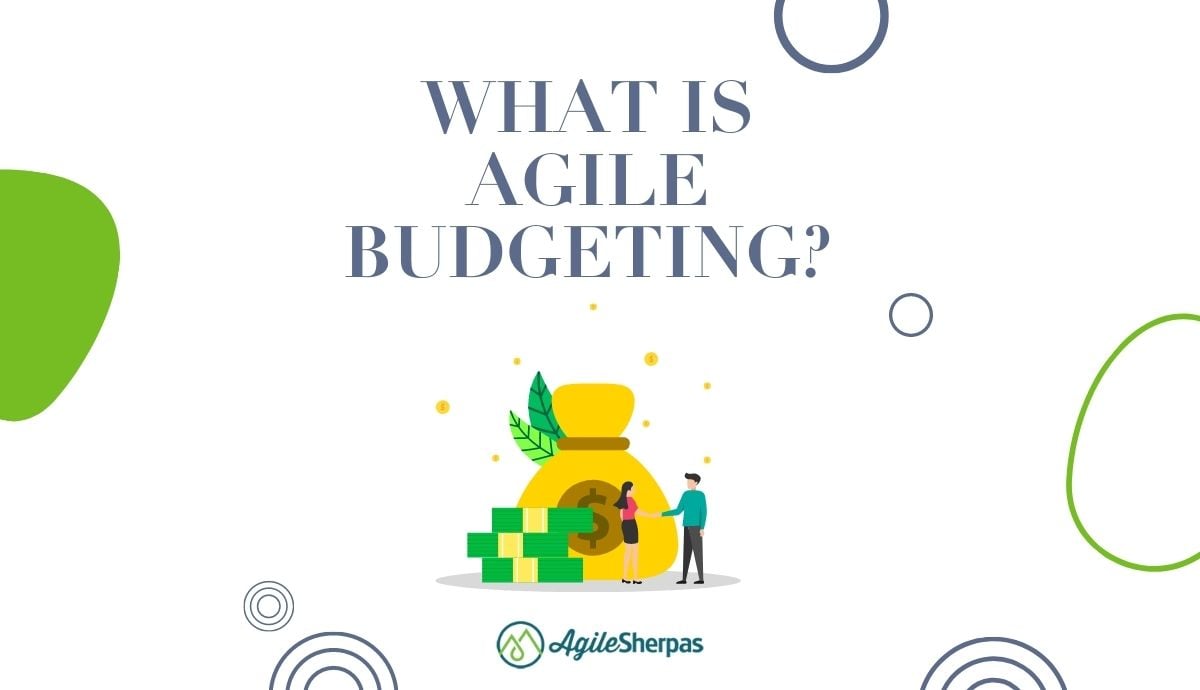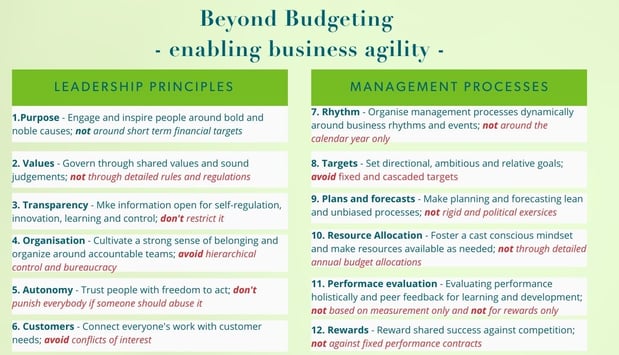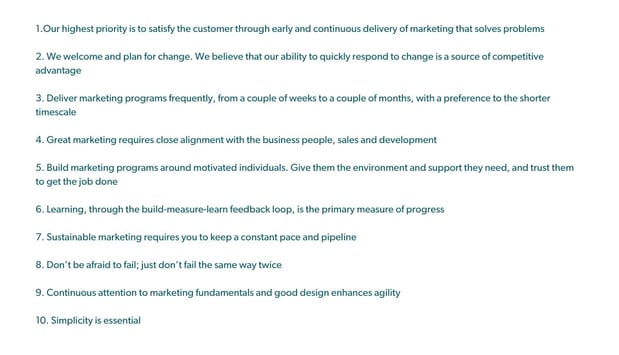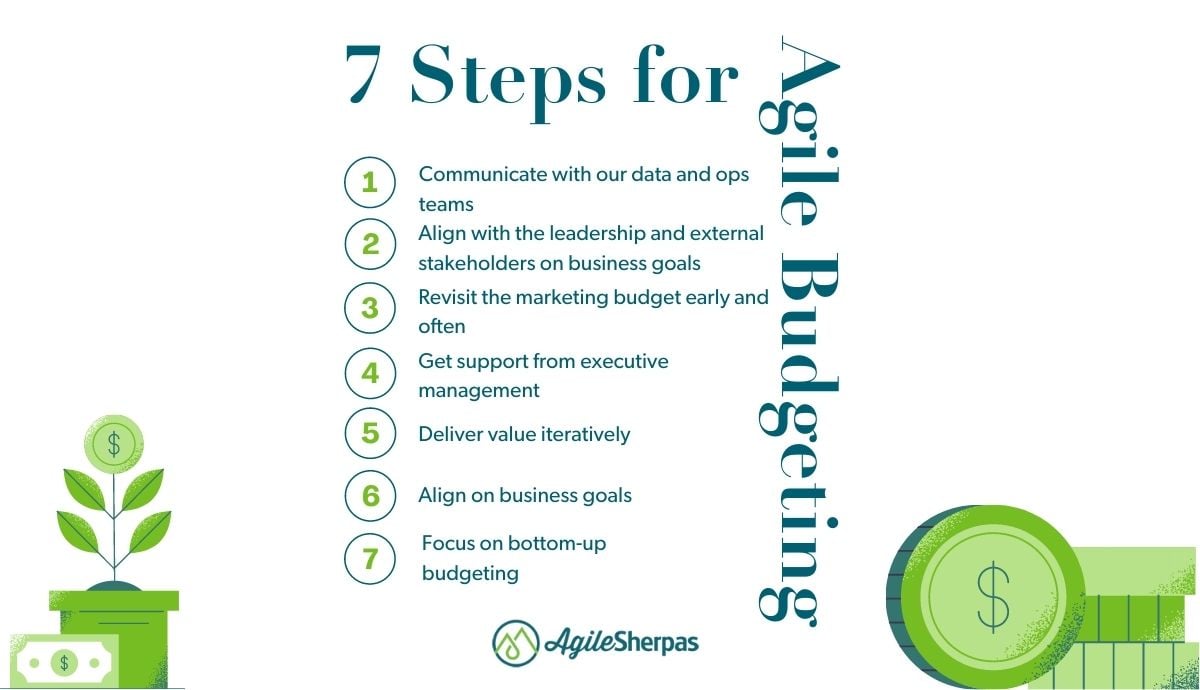-
- marketing agility
- Teams
- Organizations
- Education
- enterprise
- Articles
- Individuals
- Transformation
- Solution
- Leadership
- Getting Started
- business agility
- agile management
- going agile
- Frameworks
- agile mindset
- Agile Marketing Tools
- agile marketing journey
- organizational alignment
- Agile Marketers
- People
- Selection
- (Featured Posts)
- strategy
- agile journey
- Kanban
- Metrics and Data
- Resources
- Why Agile Marketing
- agile project management
- self-managing team
- Meetings
- Scrum
- agile adoption
- scaled agile marketing
- tactics
- scaled agile
- AI
- agile marketing training
- agile takeaways
- Agile Meetings
- agile coach
- enterprise marketing agility
- Agile Leadership
- Scrumban
- state of agile marketing
- team empowerment
- agile marketing mindset
- agile marketing planning
- agile plan
- Individual
- Intermediate
- Team
- Videos
- kanban board
- Agile Marketing Terms
- agile marketing
- agile transformation
- traditional marketing
- FAQ
- agile teams
- Agile Marketing Glossary
- CoE
- Scrumban
- agile
- agile marketer
- agile marketing case study
- agile marketing coaching
- agile marketing leaders
- agile marketing methodologies
- agile marketing metrics
- agile pilot
- agile sales
- agile team
- agile work breakdown
- cycle time
- employee satisfaction
- marketing value stream
- marketing-analytics
- remote teams
- sprints
- throughput
- work breakdown structure
- News
- agile brand
- agile marketing books
- agile marketing pilot
- agile marketing transformation
- agile review process
- agile team charter
- cost of delay
- hybrid framework
- pdca
- remote working
- scrum master
- stable agile teams
- startups
- team charter
- team morale
- user story
- value stream mapping
- visual workflow

If we operate like the majority of enterprises out there, Q4 is the time when we start to prepare for next year. We look back at the progress we’ve made in the past nine months and begin laying out plans and targets for the twelve months that come after December.
One of the most significant parts of that preparation is securing resources for achieving the goals we set for ourselves and our teams. To do so, marketing teams and management dive into program planning, campaign timelines preparation, capacity analysis and planning, and much more for the whole year ahead.
This has become significantly more difficult in the past few years, especially since Covid changed the world and created enormous organizational turmoil.
The increased complexity of the business landscape made it incredibly difficult for marketers to predict their needs and ensure that they will be effective at delivering the results they promise in order to secure funding.
One of the downfalls of the traditional budgeting approach that affects marketers negatively is that it hinders the agility of the whole marketing organization. We dedicate resources to specific programs and channels for a long period of time, and expect to see progress and results based on what we knew the moment when we were securing the funding.
This makes it close to impossible to pivot and allocate resources to other areas of the department when we see that parts of our process perform better or worse than anticipated.
The good news is that there's an approach to budgeting that allows us to maintain that much-needed agility and outperform organizations that stick to traditional budgeting methods. It's forward-looking and is applicable even to enterprises at an early stage of Agile transformation.
Let’s dive into it.

What is Agile Budgeting?
The Agile budgeting approach has been growing in popularity, but has yet to find wide application at the enterprise level. It replaces the rearview mirror approach, within which we rely only on old data to adjust strategy and relocate resources.
Instead, Agile budgeting is forward-looking.
The approach relies on setting clear expectations and providing continual reminders of the goal and vision to ensure that our teams are on top of their game and perform at a high level at all times.
Most traditional marketers will use a rearview mirror budgeting, i.e. base future budgeting on last year’s budget, then make adjustments to facilitate the expected changes and new developments in the next 12 months.
Agile marketers, on the other hand, aim at a future growth target using performance metrics acquired along the way to budget for what they need presently. A journey toward agility is usually triggered by a business environment that demands fast adaptability. As a result, change is perceived and agreed upon as an integral part of the creation and delivery of value.
An Agile budget can be considered a rolling budget. We develop and apply it over time and revisit it frequently to ensure that the budget is serving us to the fullest extent at the moment.
The method we use to formulate a rolling budget is called rolling forecasting.
The forecasts we prepare to secure funding cover shorter periods of time (e.g. a quarter). After every “roll," the marketing team updates the forecast and allocates resources accordingly to adjust to the current progress and environment.
This boosts our operational agility significantly and allows us to adapt without too much fuss and effort when necessary. The only thing necessary to get more marketing budget is to show the value of our marketing effort.
Benefits of Marketing Agility for Budgeting
Marketing agility is our friend and can be extremely helpful for effective budgeting. We can use it to keep track of the time it takes to perform a marketing task (Marketing Efficiency), then justify the ROI of a new marketing tool to improve it.
Also, by keeping a close eye on campaign performance data, we can easily identify channels that perform below our needs while consuming huge chunks of our budget. As a result, we can communicate with management regarding their allocation to other activities that have brought us greater success.
Agile marketing budgets allow us to:
- Double down on what’s working. If we can't double down on experiments that work (sources, channels, ads, etc.) because our budget is locked a year in advance, we're missing the benefits of going Agile in the first place.
- Cut down on what isn’t working. Instead of wasting our precious resources on programs that don’t work optimally just to stick to the initial budget, we can test new tactics for reaching our goals quickly and stick only to those that prove their effectiveness.
- Re-allocate resources. We adjust budget between headcount, programs, and tech to quickly respond to market changes.
The value of Agile budgeting is indisputable and scales effectively over time. Still, we need a starting point from which to initiate our ascent. Reaching it requires certain experience with Agile and organizational maturity.
Before moving from rearview mirror budget planning to a more Agile approach to budgeting, we have to make sure we can at least measure our marketing programs.
In addition, we must report not just on vanity metrics (visits, leads, traffic) but also on true business value (pipeline, revenue, share of mind/ wallet, customer retention, customer satisfaction, etc.).
The other important prerequisite is to evolve our mindset to some degree. We can rely on the Beyond Budgeting movement as an inspiration and tool for laying the foundation.
Going Beyond Budgeting to Apply Agile Budgeting
The Beyond Budgeting movement emerged in the late nineties as a reaction to the serious damage that traditional budgeting has caused over the last decades. It was born at roughly the same time as Agile.
For even greater symmetry, the 12 Beyond Budgeting principles have a lot in common with the Agile Marketing Manifesto, which makes them compatible and facilitates the implementation of Agile budgeting.

The principles we see in the image above can easily be mapped to the values and principles of Agile marketing.
For example, serving a purpose by engaging and inspiring people around bold and noble causes resembles the first Agile marketing principle -- our highest priority is to satisfy the customer through early and continuous delivery of marketing that solves problems.
If we look at the remaining nine principles, we can see quite a few other similarities.

Evolving our mindset as a team and getting a clear understanding of these principles allows us to transform the way we budget and make the most of the resources at our business’ disposal.
It's clear that an Agile approach to budgeting is vital, so our next question is obviously how to actually apply Agile budgeting in practice.
7 Steps for Applying Agile Budgeting
Although there's no such thing as one recipe for introducing Agile budgeting to a marketing team, there are several steps we can take as a foundation and adjust them to fit our unique organizational context.

Step 1: Communicate with our data and ops teams
To establish a basis for our Agile budgeting process, we need data.
That data is usually in the hands of the data team, advanced analytics and/or the different marketing operations teams. It's important to cover both process metrics like efficiency and performance indicators like pipeline and customer satisfaction to make a case.
With all this information at our disposal, we can make informed forecasts of our needs during the next few months, and map them to activities that have the highest relevance and importance for achieving the goals we'll agree upon with leadership.
Step 2: Align with the leadership and external stakeholders on business goals
When we have a vision of what we want to achieve and a hypothesis of the best approach to take when doing so, it's crucial to communicate them with leadership and the stakeholders outside of marketing as well.
The scope may be different from one enterprise to another, but it's best to align around quarterly goals and targets and budget for no more than a few months ahead.
Step 3: Revisit the marketing budget early and often
How often budgeting must happen depends largely on the organizational context.
Companies that operate in an environment of high uncertainty should revisit their budget more often than those that enjoy high business predictability and few customer behavioral changes.
Whatever the case may be, a quarterly revisit should be a perfect starting point.
Budgeting more frequently (e.g. monthly) will have too much overhead with too little added value. On the other hand, established enterprises may feel more comfortable and confident with semi-annual revisits.
Step 4: Get support from executive management
Since enterprises are traditionally resistant to change, to avoid the chance of reverting to the old way of budgeting, involve the highest level of organizational leadership that has touchpoints with marketing.
The CEO and CFO are perfect examples of such roles. We have to make sure that they understand just enough about how marketing drives value for the business in order to support our efforts to boost agility through using its principles in our budgeting.
Step 5: Deliver value iteratively
To be able to budget on a quarterly basis, we need to be able to deliver significant amounts of value within these time frames. Therefore, we have to go to a more granular level and ensure that we deliver value in small increments, measured by weeks not months.
Typically that means we need Agile teams up and running that can the right frameworks and practices to get useful work out the door quickly.
Step 6: Align on business goals
Supporting business goals is the reason why marketing itself exists. Our work has so much variety that we can easily get distracted and forget the most important value that we are expected to deliver.
To apply Agile budgeting and secure the funding we need, our teams need to be aligned on a few but key goals to pursue every iteration.
We're big fans of using OKRs for that. They should be focused on delivering outcomes instead of just outputs with greater emphasis on satisfying customer needs instead of just making sure that we’ve got enough work and resources to keep busy all the time.
Step 7: Focus on bottom-up budgeting
Budgeting can be initiated both from the top and bottom of the organizational hierarchy. Our experience and observations during years of coaching enterprises have shown that the latter has the potential to be significantly more effective.
We recommend letting the team leaders and SMEs determine what's feasible, instead of forcing the team into a number that might or might not be feasible for them to work within.
The Time to Evolve is Upon Us
Just like the Waterfall method for managing work is quickly becoming obsolete in the face of Agile, rearview budgeting is on its way to becoming irrelevant and making way for more forward-looking approaches.
No matter how much we strive to achieve marketing agility, without evolving our budgeting approach it will continue to slip through our fingers.
Thankfully, Agile budgeting presents an opportunity to deviate significantly from the well-established traditional approach and to manage our resources better than ever before.
It takes time to apply, and even more time to reap the full spectrum of benefits that come with transforming the way we budget.
Yet, the value we should expect at the end makes the effort worthwhile. After establishing the foundation we covered in this article, any marketing organization can set out on the road toward budgeting agility by simply following our seven-step recipe.
Topics discussed
Improve your Marketing Ops every week
Subscribe to our blog to get insights sent directly to your inbox.



